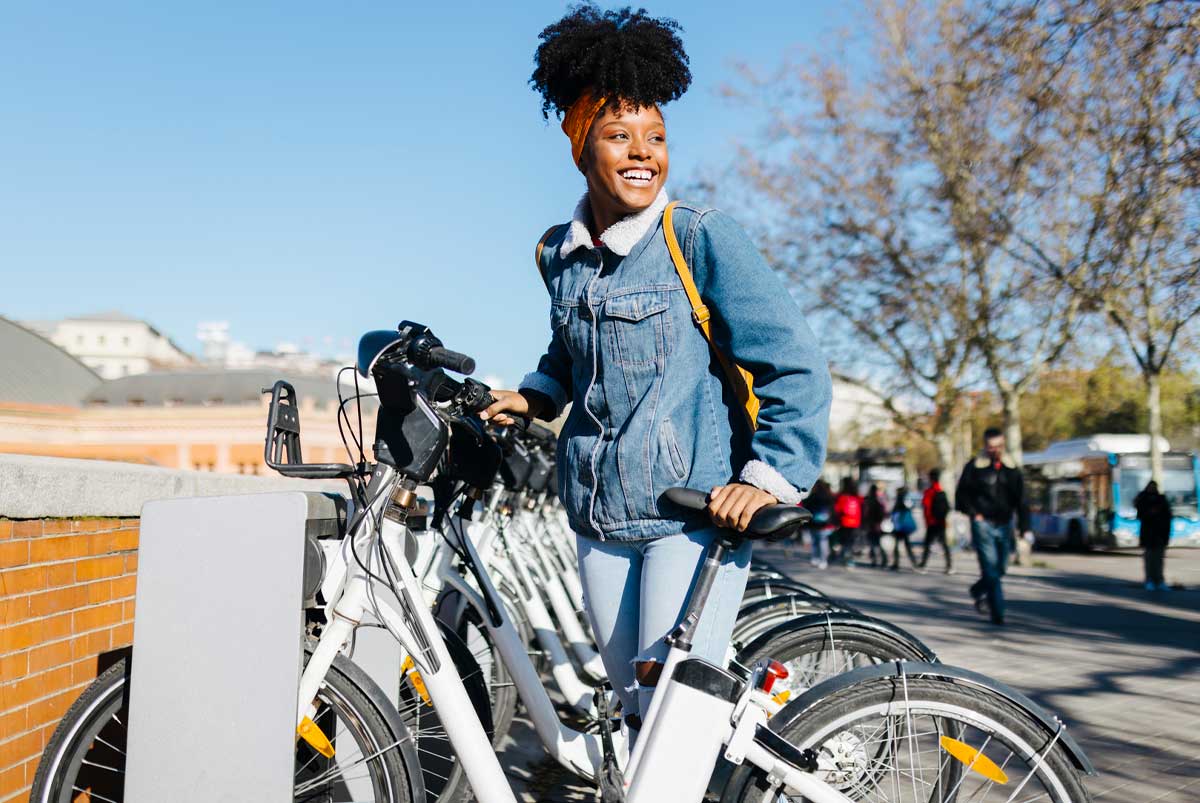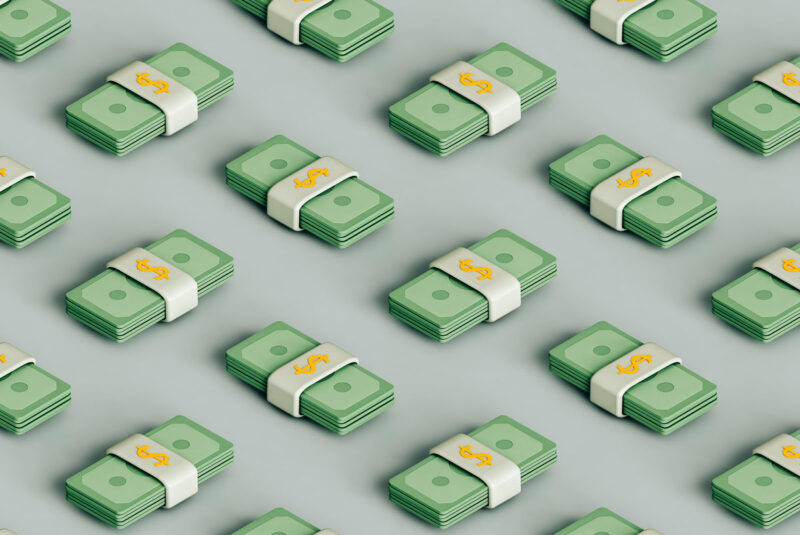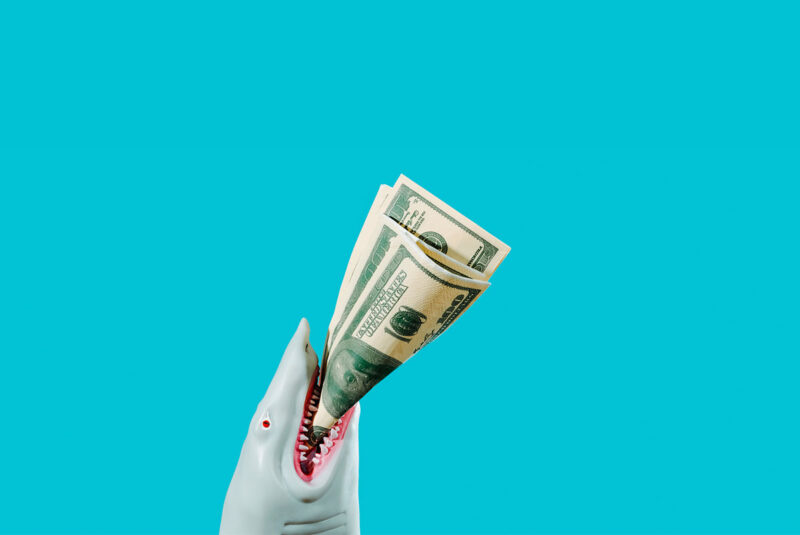The U.S. Department of Education (DOE) announced a final extension of the pause on federal student loan payments until December 31, 2022.[1] Right now, student loan payments are expected to jump-start on January 1, 2023.
Many borrowers were hoping that by the time payments restarted, their debts might be up to $20,000 lighter (if not erased) as a result of the Biden administration’s far-reaching student loan forgiveness plan.[2]
Because of ongoing litigation, the administration’s student debt relief plan has been blocked and is working its way through the courts. But you can still take advantage of a variety of programs that are already in place – and in some cases, have been upgraded – to help you achieve student loan forgiveness.
If you are struggling under the weight of your student loans, you should take advantage of student loan forgiveness, including programs that may wipe away some – or all – your debt or at least help make your monthly payments more manageable.
What Is Student Loan Forgiveness and How Does It Work?
Like the freedom that comes with forgiveness in real life, student loan forgiveness frees you from repaying the portion of your debt deemed forgiven or canceled. You are no longer obligated to pay that money back.
Under specific programs, your school debt may be forgiven, canceled or discharged once you meet their requirements, which may include a required number of on-time monthly payments. Most student loan forgiveness programs require 10 – 25 years of repayment.[2]
Your student loan debt can be forgiven in one of three ways:
- Public Service Loan Forgiveness (PSLF): Your loans can be forgiven if you meet the program’s employment and social service requirements.
- Student loan discharge: Your loan(s) can be discharged because your school shut down, you have a “total and permanent disability” that doesn’t allow you to work or you’re a victim of fraudulent activity. Your loan(s) can also be canceled after your death.
- Income-driven repayment (IDR) plans: An income-driven repayment plan isn’t technically a forgiveness program. But with an IDR plan, your student loan payment(s) gets adjusted based on your income and family size. After making reduced payments for 20 – 25 years, if there is a remaining balance, it will be forgiven.[3]
Who Is Eligible for Student Loan Forgiveness Programs?
Each loan forgiveness program has criteria you must meet to qualify. Under certain programs, your student loan debt may be forgiven, canceled or discharged.
You may be eligible for student loan forgiveness if:
- You’ve worked in public service for 10 years: Are you a teacher or firefighter or work in another public service job? If you’ve served in that position for 10 years, you may be eligible for debt forgiveness through the PSLF program.[4] To enroll in the PSLF program, you must be employed full-time with an eligible employer and make 120 qualifying payments through an income-driven repayment plan.
- You have Direct Loans: Direct Loan(s) are the most common type of federal student loans. If you have a Direct Loan and meet the income requirements, you should be eligible for the Biden administration’s proposed (and now blocked) one-time debt relief. If you’re enrolled in a qualified repayment program while working for an eligible employer and have made 120 monthly payments, you should also qualify for PSLF.[5]
- You’re enrolled in a qualifying repayment plan: There are several income-based repayment plans, such as Pay As You Earn (PAYE), Revised Pay As You Earn (REPAYE), Income-Based Repayment (IBR) and Income-Contingent Repayment (ICR). The IBR, PAYE and ICR programs all qualify for PSLF.[6]
Most student loan forgiveness programs require participation for 10 – 25 years before your loans are forgiven.
The Biden Administration Student Loan Relief Plan, Explained
The Biden administration proposed a three-pronged student debt relief plan to help federal student loan borrowers struggling to make ends meet during the pandemic and its aftermath.
You’re probably benefiting from the first part of the plan: the repeat extensions of the payment pauses. The plan also contains a one-time debt relief measure to cancel up to $20,000 in student loan debt for millions of borrowers and proposes adjustments to existing forgiveness plans.
The three-part debt relief plan
If you made less than $125,000 ($250,000 for married couples or heads of households) during 2020 or 2021, you were eligible for debt relief.
Part 1: Student loan payments resume in 2023
Mark your calendars! The payment pause is scheduled to end on December 31 and restart on January 1, 2023.Contact your loan service providers to see if they offer a discount if you autopay your student loans.[1]
Part 2: Sweeping debt forgiveness
The Biden administration announced that borrowers who meet certain income criteria could qualify for $10,000 – $20,000 in student debt forgiveness.
Income criteria:
- You’re eligible for debt relief if you earned less than $125,000 in 2020 or 2021 ($250,000 for married couples or heads of households).
- If you received a Pell Grant, you were eligible for up to $20,000 in debt relief. If you didn’t receive a Pell Grant, you were eligible for up to $10,000 in debt relief.[2]
- Your outstanding loan balance would determine how much relief you get. For example, if you’re eligible for $10,000 in debt relief but only have $6,000 left to pay off, you’ll receive $6,000 in debt relief.[3]
The DOE also announced that borrowers who took out federally backed loans that were serviced by private lenders – specifically Perkins loans and Federal Family Education Loans – didn’t qualify for forgiveness. Some 800,000 borrowers couldn’t take advantage of the administration’s one-time debt relief measure – but the administration did announce that it would look into alternative relief measures for disqualified borrowers.
Part 3: Changes to repayment options
The third part of Biden’s student debt relief plan involved overhauling the current student loan repayment process – specifically income-driven repayment plans and the Public Service Loan Forgiveness program.
What Are the Different Types of Forgiveness Programs?
There are several student loan forgiveness programs you may be eligible for.
Public Service Loan Forgiveness (PSLF) Program
The Biden administration wants to reform the Public Service Loan Forgiveness (PSLF) program by ensuring that borrowers working at nonprofits, in the military or at a federal, state, tribal or local government agency receive appropriate credit toward loan forgiveness.[2]
Borrowers in this category could qualify to have all their student loans forgiven.
These changes would build on recent adjustments made by the DOE, which erased more than $10 billion in loan debt for more than 175,000 public servants.[2]
Teacher Loan Forgiveness Program
The Teacher Loan Forgiveness Program forgives up to $17,500 on subsidized and unsubsidized Direct Loans and Federal Stafford Loans.[7]
To qualify, you must:
- Be a “highly qualified teacher” that passed a rigorous state exam or met other licensing requirements
- Teach at a low-income school or educational agency
- Work full-time for the entire academic year (with a few exceptions)
- Teach 5 consecutive years without any breaks in employment
- Have taken out your loan before your fifth year of teaching ends
Health care professional forgiveness programs
There are a few medical loan forgiveness programs for doctors, nurses and other health care professionals.
Medical forgiveness programs may be offered by:
- Private companies
- Nonprofits
- The federal government or states through grants
- The military
State-based forgiveness programs
Some states also offer student loan forgiveness programs to their residents. Spoiler alert: State forgiveness programs are not the same as federal student loan forgiveness programs.
For most state-based forgiveness programs, you will need to be a resident of the U.S. and the state you’re applying in.
For information on state-sponsored student loan forgiveness programs, contact the chamber of commerce where you live.
Perkins Loan cancellation
Your loan may qualify for cancellation if you worked in public service and received a Perkins Loan after October 7, 1998.
Although the Perkins Loans program ended in 2017, borrowers with a Perkins Loan may qualify for up to 15% – 30% in cancellation.[8]
To qualify for the Perkins Loan cancellation program, you must:
- Be employed and work full-time
- Work as a teacher, a public servant or in the nonprofit sector
Types of Income-Based Repayment Plans
Let’s take a look at the different income-based repayment plans borrowers can take advantage of.
Income-Driven Repayment plans (IDRs)
Before the Biden administration announced its three-part debt relief plan, borrowers who were repaying their student loans under an IDR plan made monthly payments equal to 10% of their discretionary income. The administration is proposing to cap repayment to 5% of a borrower’s discretionary income, which may cut monthly payments in half. Here are some other proposed changes[2]:
- Right now, borrowers under IDR plans must make payments for 20 – 25 years before they’re eligible for loan forgiveness. Under the new plan, borrowers with an original starting loan balance of up to $12,000 can have their loans forgiven after 10 years of payments.
- In a break from the past, the DOE would cover the interest accrued on a borrower’s loan if the borrower’s monthly payment wasn’t enough to cover the accrued interest.
Income-Contingent Repayment (ICR) plan
If you are an eligible Direct Loan borrower, you may qualify for an ICR. Through this plan, the repayment amount can be:
- 20% of your discretionary income
- A fixed monthly payment over 12 years (if it’s less than 20% of your discretionary income)
Your income is verified each year to establish your monthly payment amount.[9] After 25 years, any remaining balance is forgiven. And the plan qualifies for PSLF payments.
Income-Based Repayment (IBR) plan
Borrowers with Direct Loans may also qualify for an IBR plan. This plan offers the following repayment options:
- 10% of your discretionary income, if you received a new loan on or after July 1, 2014.
- 15% of your discretionary income, if you received your loans before July 1, 2014.
Your repayment amount under this plan will never exceed that of the 10-year Standard Repayment Plan.[5]
Pay As You Earn (PAYE)
To qualify for the PAYE plan, you must have taken out your first Direct Loan after October 1, 2007, and taken out a Direct Loan or Direct Consolidation Loan after October 1, 2011. Your monthly payments (which will be determined by your family size and income) typically equal 10% of your discretionary income. You’ll need to reapply for the PAYE plan every year. And the PAYE plan is an eligible repayment plan for PSLF.
Revised Pay As You Earn Repayment plan (REPAYE)
Any borrower with eligible Direct Loans can qualify for REPAYE. Your monthly payment amount is typically capped at 10% of your discretionary income.
Under REPAYE, any remaining debt balance on your undergraduate loans will be forgiven after 20 years of payments. For graduate loans, your debt balance will be forgiven after 25 years. And REPAYE is a qualified repayment plan for PSLF.
What Is Student Loan Forgiveness vs. Discharge?
Student loan discharge isn’t the same as student loan forgiveness. While forgiveness usually requires you to meet certain conditions, such as repaying your loans for a set period of time or working in a qualifying profession – discharge doesn’t require any of that.
Your loan can be discharged if your school made processing errors on your student loan or the school closed. You may even qualify to have your entire loan absolved. And when a loan is discharged, you are no longer responsible for repaying it.
You can apply for discharge using a borrower defense, including:
- Your loans were mishandled by your school.
- Some type of fraud occurred.
- You can’t pay your loan due to financial hardship after filing bankruptcy.
- The school closed while you were enrolled.
Once your loan is discharged, you may receive a refund for any payments you made during the approval process. Discharged student loan debt will not show up on your credit reports.[10]
Student Loan Forgiveness FAQS
Under the administration’s proposed plan, the most borrowers needed to do was fill out a short debt relief application. You were eligible for debt relief if you earned less than $125,000 in 2020 or 2021 ($250,000 for married couples or heads of household). If you didn’t receive a Pell Grant, you could qualify for up to $10,000 in relief. If you did receive a Pell Grant, you could qualify for up to $20,000 in debt relief.
Right now, student debt relief is in limbo, and it may take months before the courts decide on the cases.
Under the PSLF program’s latest guidelines, if you work as a teacher, firefighter, nurse, doctor or in another public service job, your loans may be forgiven after 10 years.[11]
If you think you qualify for PSLF, use the PSLF Help Tool to determine whether you’re eligible. If you meet the program’s requirements, the DOE will notify you that your debt is forgiven.
If you have federal student loans, you may be eligible for forgiveness after enrollment in an IDR plan for 20 years.[4]
Borrowers making payments under the PSLF plan are eligible for forgiveness after 20 years. If the Biden administration’s reforms to IDR plans are approved, borrowers with a starting balance of $12,000 or less can have their loans forgiven in 10 years. Otherwise, forgiveness typically takes 20 – 25 years.
Student loans only go away after they’ve been paid off. Like any late payment, delinquency or default, if you default on your student loans, the negative mark will stay on your credit report for up to 7 years – even if your loans are forgiven or canceled.[8]
No. You do not repay the loan amount that has been forgiven.
Forgiveness – Can You Imagine?
Getting a degree is an achievement – an achievement shouldn’t delay or derail other life goals (think: buying a home, getting married or starting a business).
Explore your loan forgiveness options – but don’t forget to set your alarm. Unless there’s a surprise extension coming, you should be receiving a notice from your loan servicer(s) to restart payments in January.
The Short Version
- Under certain programs, your student loan debt may be forgiven, canceled or discharged
- The Department of Education announced a final extension of the pause on federal student loan payments and interest until December 31, 2022[1]
- If you made less than $125,000 (or $250,000 for married couples or heads of households) in 2020 or 2021, you may be eligible for debt relief
U.S. Department of Education. “Biden-Harris Administration Announces Final Student Loan Pause Extension Through December 31 and Targeted Debt Cancellation to Smooth Transition to Repayment.” Retrieved November 2022 from https://www.ed.gov/news/press-releases/biden-harris-administration-announces-final-student-loan-pause-extension-through-december-31-and-targeted-debt-cancellation-smooth-transition-repayment
The White House. “FACT SHEET: President Biden Announces Student Loan Relief for Borrowers Who Need It Most.” Retrieved November 2022 from https://www.whitehouse.gov/briefing-room/statements-releases/2022/08/24/fact-sheet-president-biden-announces-student-loan-relief-for-borrowers-who-need-it-most/
U.S. Department of Education. “The Biden-Harris Administration’s Student Debt Relief Plan Explained.” Retrieved November 2022 from https://studentaid.gov/debt-relief-announcement/
U.S. Department of Education. “Student Loan Forgiveness.” Retrieved November 2022 from https://studentaid.gov/manage-loans/forgiveness-cancellation
U.S. Department of Education. “Income-Driven Repayment Plans.” Retrieved November 2022 from https://studentaid.gov/manage-loans/repayment/plans/income-driven
U.S. Department of Education. “Fact Sheet: Public Service Loan Forgiveness (PSLF) Program Overhaul.” Retrieved November 2022 from https://www.ed.gov/news/press-releases/fact-sheet-public-service-loan-forgiveness-pslf-program-overhaul
U.S. Department of Education. “Teacher Loan Forgiveness.” Retrieved November 2022 from https://studentaid.gov/manage-loans/forgiveness-cancellation/teacher
U.S. Department of Health and Human Services. “Loan Repayment.” Retrieved November 2022 from https://nhsc.hrsa.gov/loan-repayment
U.S. Department of Health and Human Services. “Eligibility and Programs.”Retrieved November 2022 from https://www.lrp.nih.gov/eligibility-programs
U.S. Department of Health and Human Services. “Apply for Loan Repayment.” Retrieved November 2022 from https://bhw.hrsa.gov/funding/apply-loan-repayment/nurse-corps
U.S. Department of Health and Human Services. “For Members of the U.S. Armed Forces.” Retrieved November 2022 from https://studentaid.gov/sites/default/files/military-student-loan-benefits.pdf




